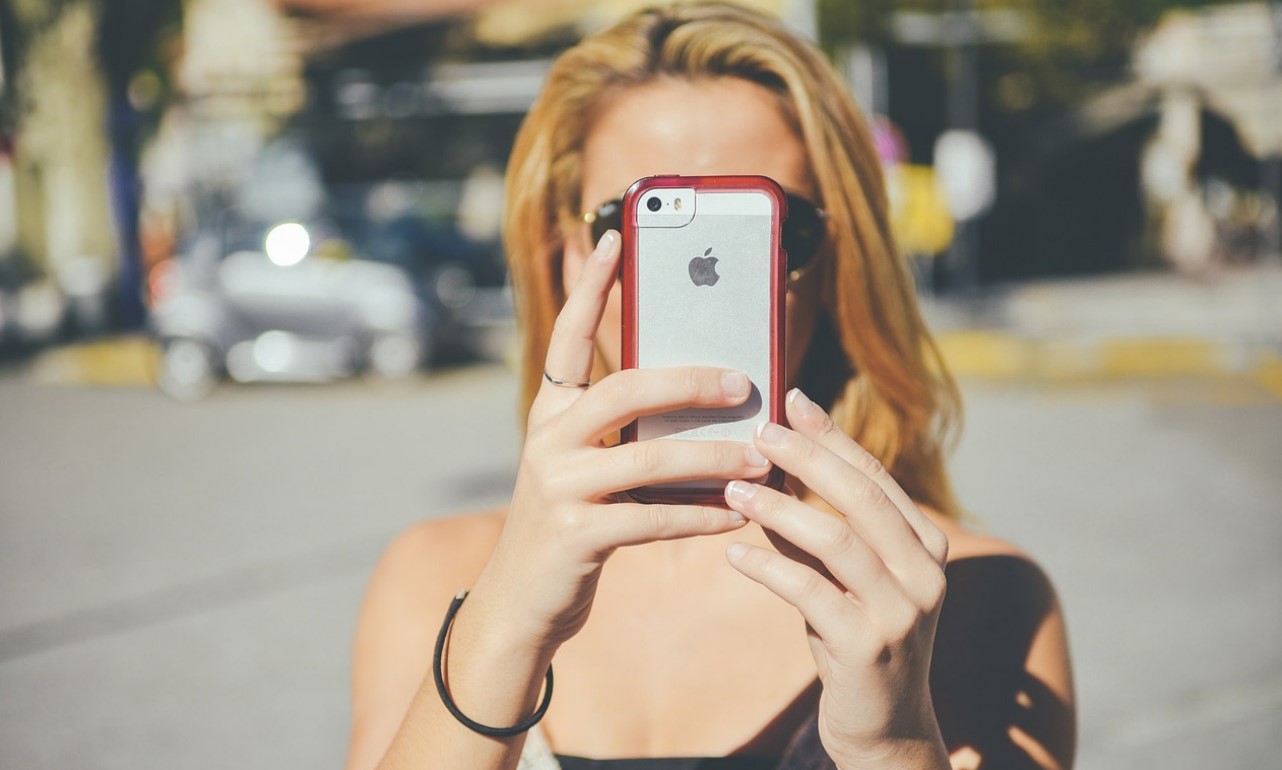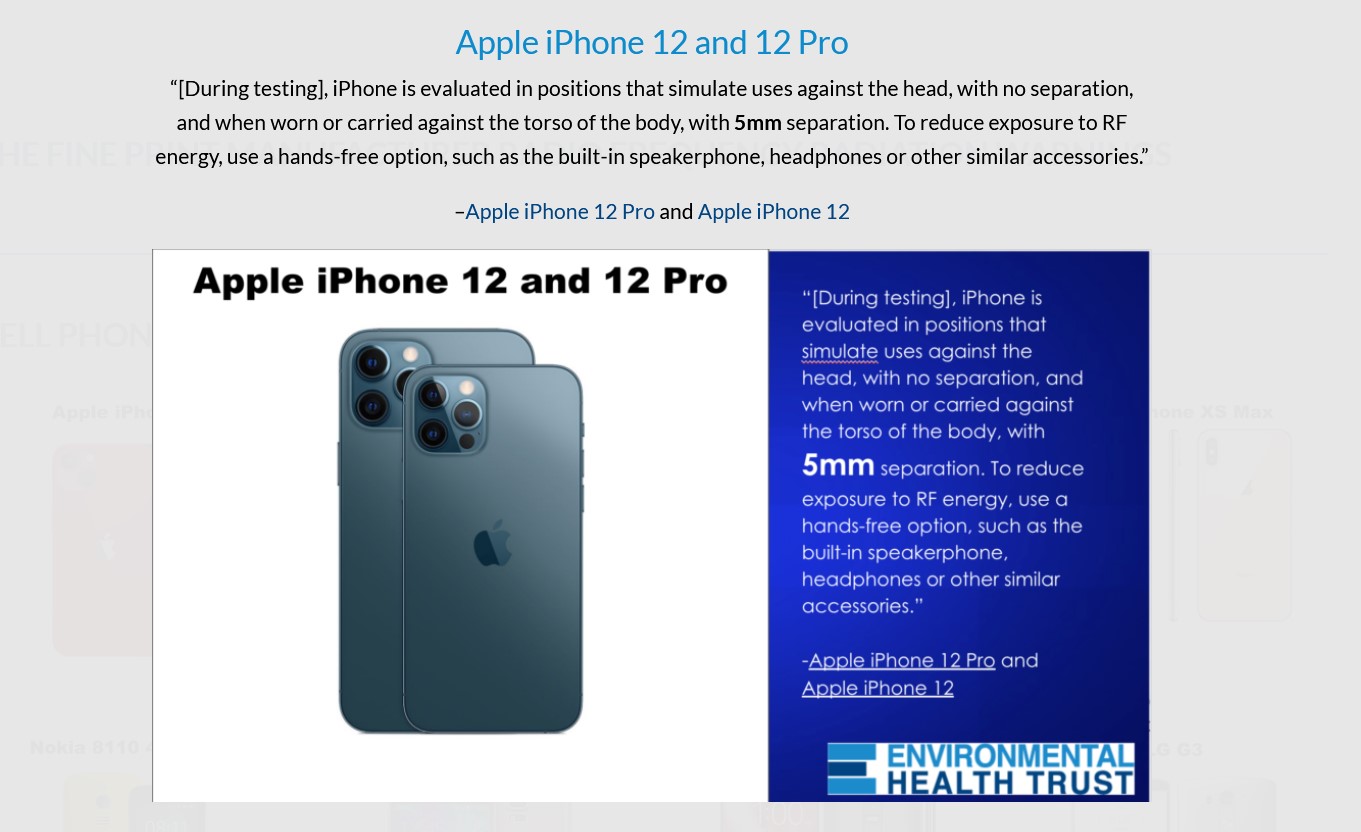 By B.N. Frank
By B.N. Frank
Decades of research have already revealed that exposure to electromagnetic fields (EMF) from cell phones and other wireless sources – including 5G – is biologically harmful. Additionally, manufacturers are required to provide consumers with warnings about radiation exposure from cell phones and other wireless devices. In regard to Apple devices, last month, Apple issued new warnings about how its products can adversely impact pacemakers and other medical devices. The company also worked very hard to prevent a cell phone radiation emissions lawsuit from being heard by the U.S. Supreme Court. While the company has succeeded, lead attorney for the plaintiffs explains not all hope is lost.
From Children’s Health Defense / The Defender:
U.S. Supreme Court Won’t Hear Apple Cellphone Radiation Case
The U.S. Supreme Court this week decided against hearing a lawsuit against Apple that sought to determine whether the Federal Communication Commission’s radiofrequency radiation guidelines preempt state safety and health law.
Miss a day, miss a lot. Subscribe to The Defender’s Top News of the Day. It’s free.
The U.S. Supreme Court this week decided against hearing a lawsuit against Apple that sought to determine whether the Federal Communication Commission’s (FCC) radiofrequency (RF) radiation guidelines preempt state safety and health laws.
The plaintiffs in the lawsuit — nearly 30 iPhone users — allege that Apple’s iPhone emitted RF radiation that regularly exceeded the federal exposure limit and that Apple violated California state health and safety laws by failing to warn consumers about the health and safety risks of holding the device close to the body.
The plaintiffs on Jan. 23 filed a petition for a writ of certiorari — or “cert” request — asking the Supreme Court to hear the case after the U.S. Court of Appeals for the 9th Circuit ruled on Aug. 26, 2022, that the plaintiffs’ claims were invalid because the FCC’s federal guidance “impliedly preempted” state health and safety law.
Commenting on the U.S. Supreme Court’s decision, W. Scott McCollough, Children’s Health Defense’s (CHD) lead litigator for electromagnetic radiation cases, said the Supreme Court’s denial of the plaintiffs’ request was “disappointing” but there is “still hope” that the question of federal preemption of state health and safety law will be addressed.
McCollough — who in March co-authored an amicus brief submitted by CHD and eight nonprofits in support of the plaintiffs’ request — said, “We wish the court would’ve taken it up, but it’s not over. There will be another chance.”
McCollough told The Defender there is still a “significant circuit split” — meaning that different U.S. Circuit courts have rendered differing decisions — on the issue of whether FCC guidelines on human exposure limits on RF radiation preempt state health and safety law and “typically that is something the [Supreme] Court will resolve at some time.”
An amicus brief is filed by non-parties to litigation to provide information that has bearing on the issues and to assist the court in reaching the correct decision. It comes from the Latin words amicus curiae, which means “friend of the court.”
‘If we can ever get the FCC to change the rules, then we don’t have to worry about state court law’
The Supreme Court’s decision is a blow to individuals in the Western U.S. seeking to sue telecommunication companies under state laws because it means the 9th Circuit’s August ruling remains unchallenged and “will probably be precedent-setting in the 9th Circuit,” said McCollough, who is a former Texas assistant attorney general and telecom and administrative law attorney.
“So there is now in the 9th Circuit no ability to obtain any kind of state law — and specifically tort — remedies,” McCollough added.
The 9th Circuit is the largest judicial circuit in the U.S. and covers California, Oregon, Washington, Nevada, Idaho, Montana, Arizona, Alaska, Hawaii, Guam and the Northern Mariana Islands.
However, there are “other potential remedies,” McCollough said.
For instance, there are “other available remedies under federal statutes — and an FCC regulation cannot preempt a federal statute” established by Congress so “there can be no preemption question.”
“We might have what we call a ‘conflict of laws’ question [in which] you have two statutes that don’t fit well together,” McCollough said.
In that situation, the federal statute established by Congress “should take priority” over the FCC guidelines “but that’s not fully determinative,” he added.
There are “many reasons” why the Supreme Court may choose to not hear a case “even if they are interested” in the issue at hand, McCollough told The Defender.
For instance, the Supreme Court receives approximately 7,000-8,000 requests per annual term to hear cases and only hears arguments in about 80 cases.
Additionally, the court may have thought the case was not a “good vehicle” for addressing the question of federal preemption, said McCollough.
McCollough pointed out that by the time the plaintiffs in the lawsuit against Apple had reached the 9th Circuit, they had dropped all personal injury claims and narrowed their case to focus on how Apple had failed to disclose the health risks of its devices.
McCollough said it’s possible the Supreme Court wanted to wait until it had a case seeking state law remedies for actual personal injuries rather than a claimed failure to disclose potential risks.
Finally, what the Supreme Court’s decision “really does,” McCollough said, “is make ever more important the win we [CHD] had in 2021, in the District of Columbia Circuit where that court told the FCC to re-evaluate the [RF emission] rules — the very rules whose operation were held to be preemptive.”
“If we can ever get the FCC to change the rules, then we don’t have to worry about state court law,” McCollough said.
Last month CHD petitioned the FCC to “quit stalling” and comply with the court-ordered mandate to review and explain how the agency determined its current guidelines adequately protect humans and the environment against the harmful effects of exposure to RF radiation.
The FCC’s chairwoman on May 11 sent a letter to the chair of the Senate Committee on Commerce, Science, and Transportation in which she said she “promises that the commission will be taking up revision of their NEPA [National Environmental Policy Act] rules — which includes its RF radiation exposure guidelines — as soon as the CEQ [Council of Environmental Quality] gets finished with its rulemaking.”
According to McCollough, the CEQ has already set forth rules requiring the FCC to act.
“There are already existing CEQ rules which require them [the FCC] to act and they’re forgetting this,” he said.
Nonetheless, the FCC’s letter is significant because it indicates that “at some point” they are going to do something. “That’s the first time they’ve ever said that,” McCollough added.
Activist Post reports regularly about cell phones and other unsafe technologies. For more information, visit our archives and the following websites:
- Children’s Health Defense
- Environmental Health Trust
- Electromagnetic Radiation Safety
- Physicians for Safe Technology
Top image: Pixabay
Become a Patron!
Or support us at SubscribeStar
Donate cryptocurrency HERE
Subscribe to Activist Post for truth, peace, and freedom news. Follow us on SoMee, Telegram, HIVE, Flote, Minds, MeWe, Twitter, Gab, What Really Happened and GETTR.
Provide, Protect and Profit from what’s coming! Get a free issue of Counter Markets today.



Be the first to comment on "Plaintiffs Denied Supreme Court Hearing Regarding Apple Cellphone Radiation Emissions “but it’s not over”"